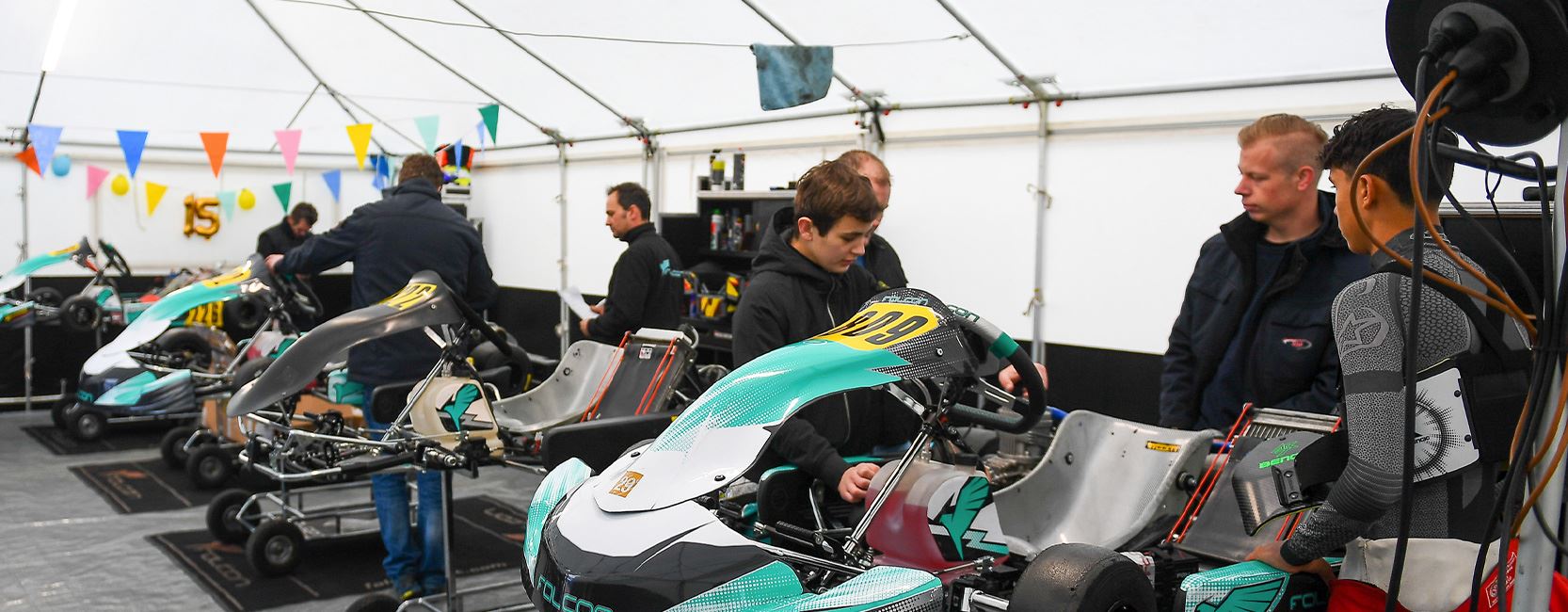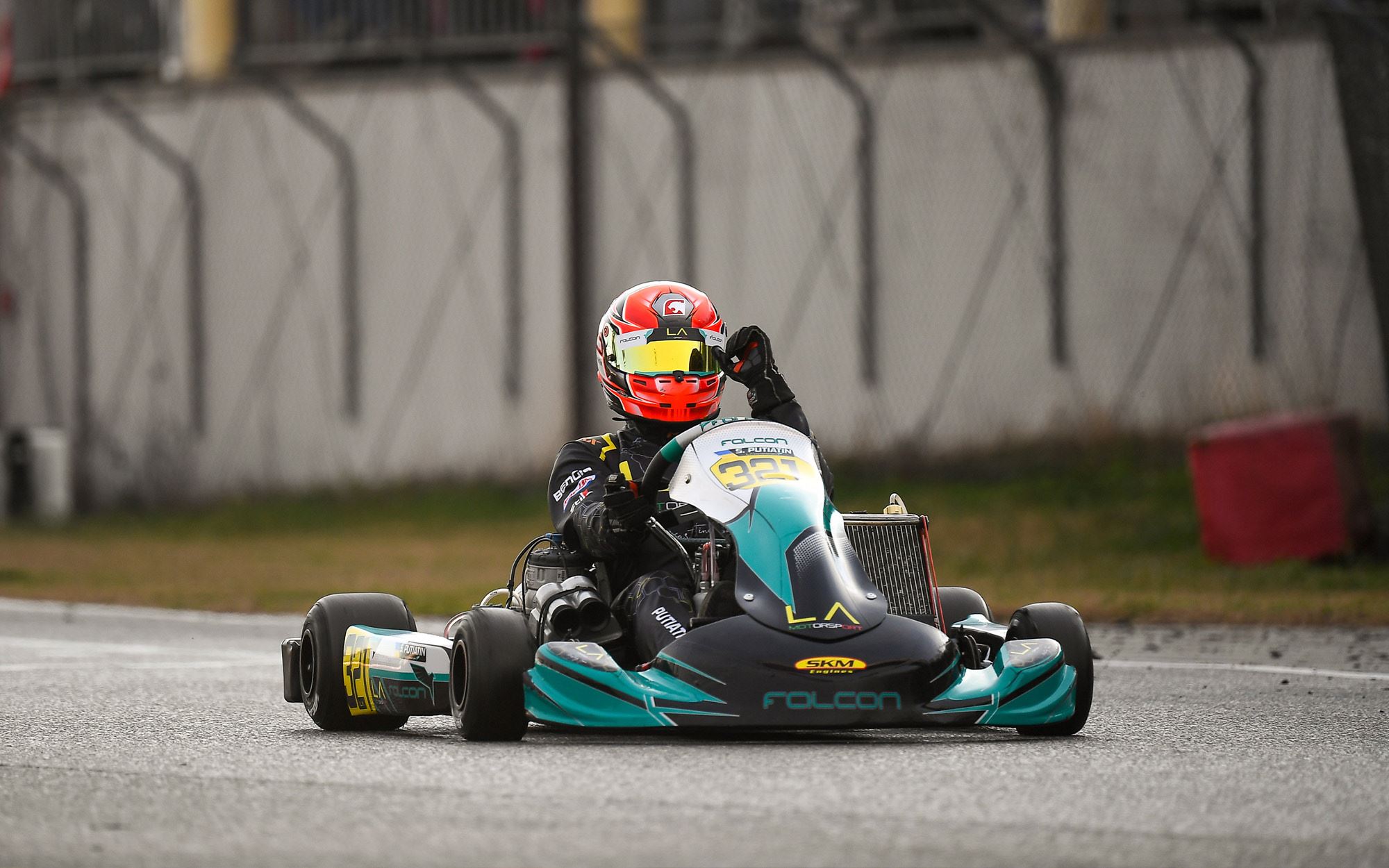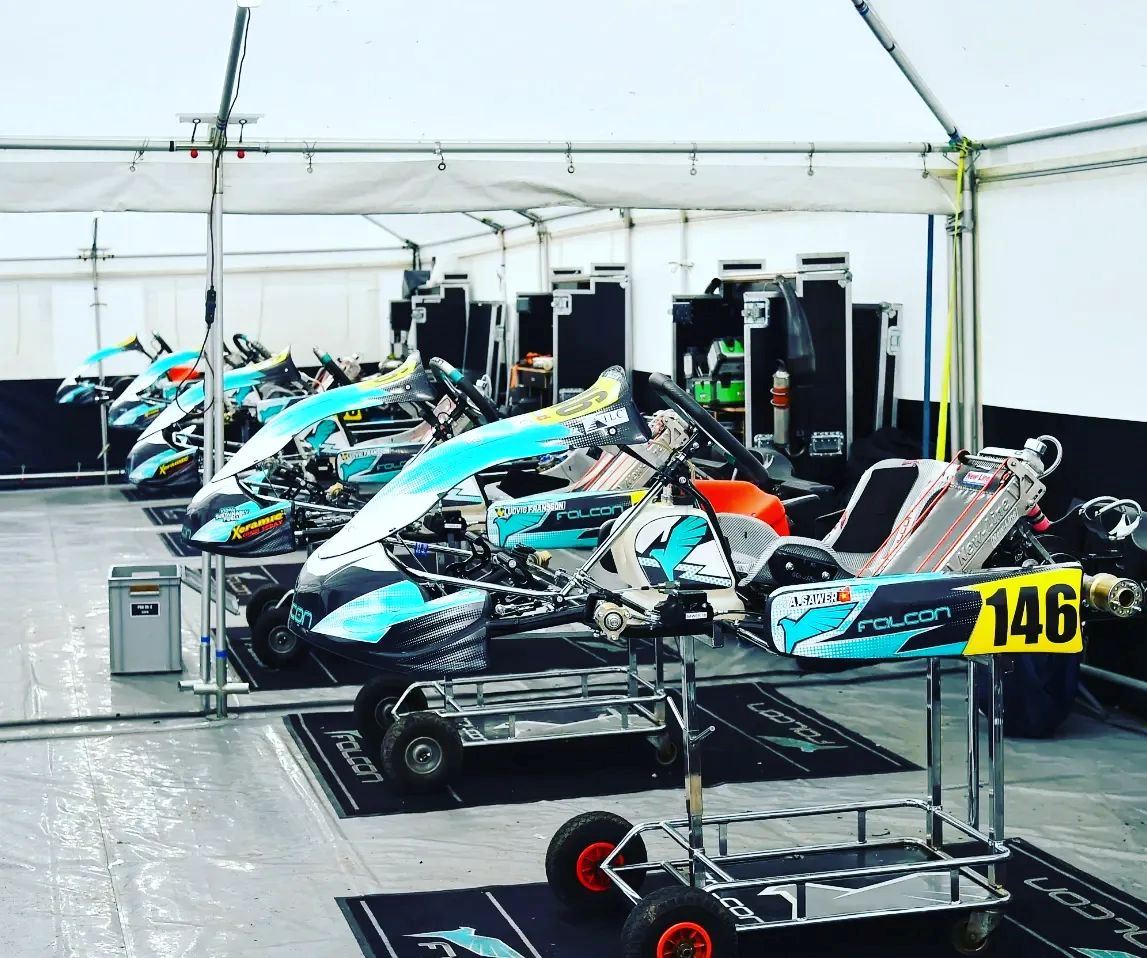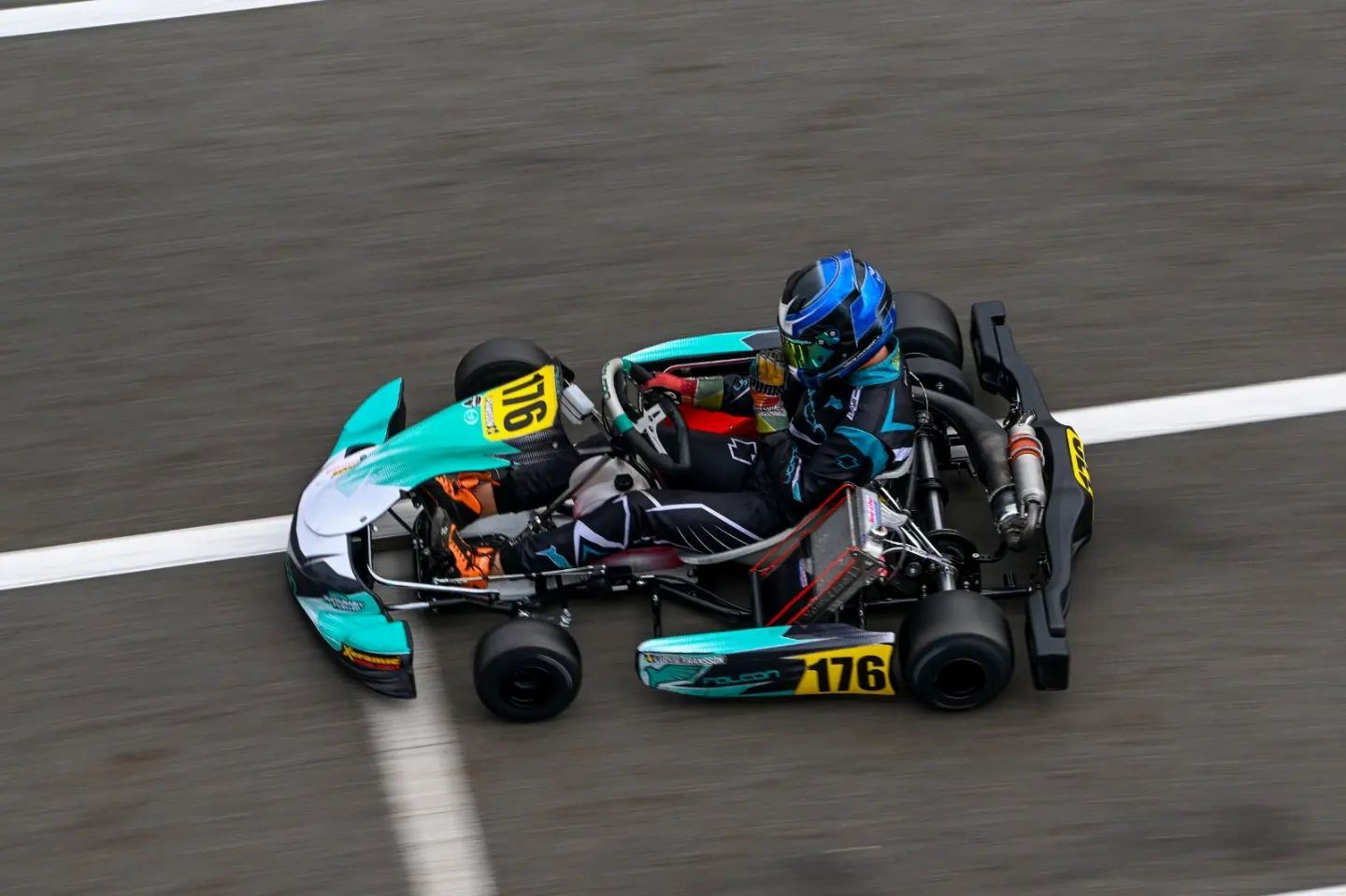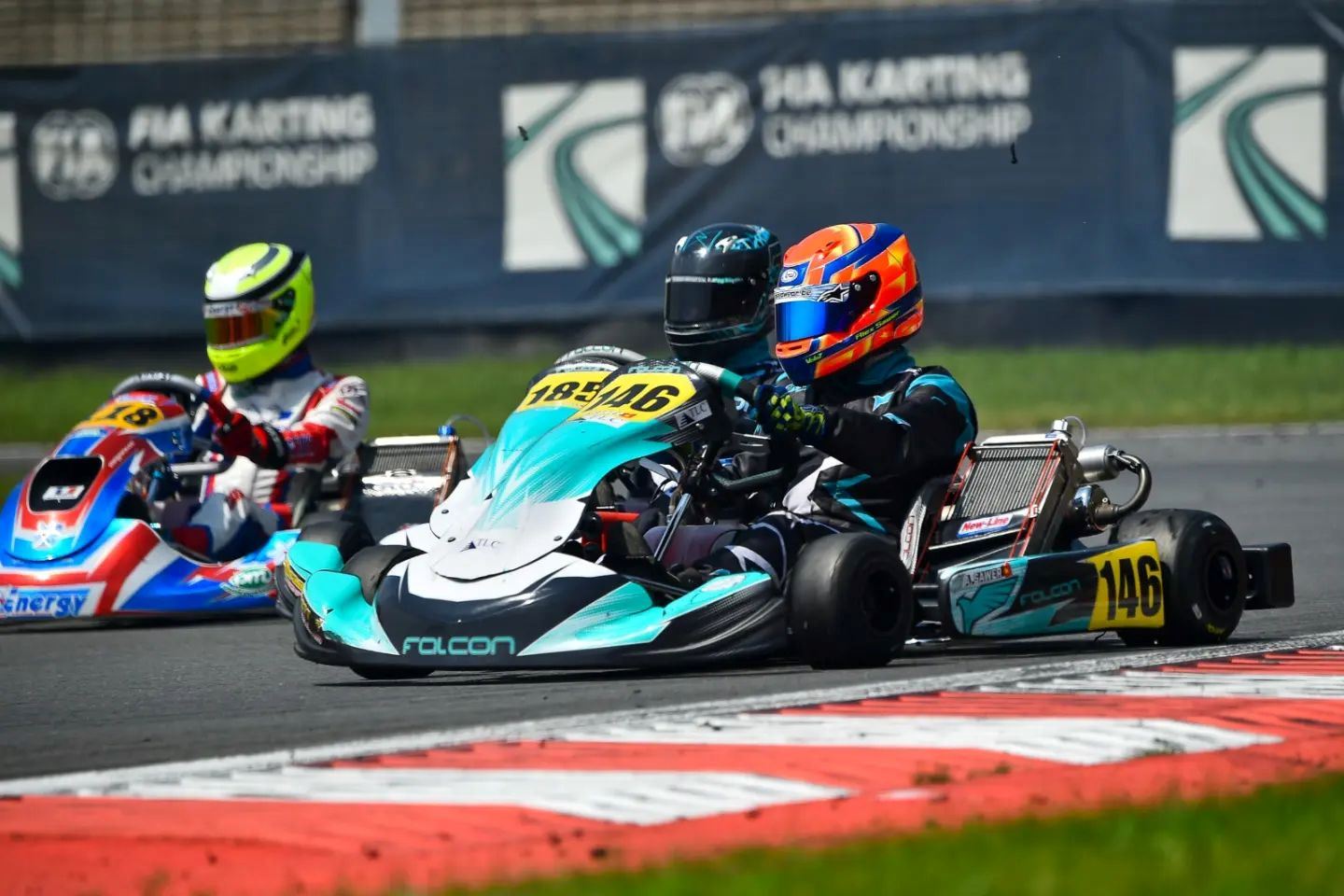About the Company.
Peter de Bruijn kart Racing was founded by Peter de Bruijn. Peter started racing go-karts when he was 11 years old. His father Jan had a strong passion for motor racing, and in 1967 he took young Peter to the Grand Prix circuit of Zandvoort, where they saw Jim Clark winning. Jan meeting up with Ruud Hoffman, who had a homemade chassis powered by West Bend 100cc engine, was a turning point. He bought the chassis for Peter, but before he could try it out the chassis needed to be serviced first. This was when Peter put his hands on a go-kart for the first time. Peter soon got more interested in chassis set-up with his interest expanding into engines at the age of 12. His feel for setting up the equipment soon raised the interest of other drivers. In 1972, Leo van Calcar from Rotterdam, former 100cc ICA Dutch Champion, saw Peter’s potential and decided to help him with his technical and driving skills. Despite of lack of experience, Peter his improved driving technique soon paid off. At the World Junior Championship in Vojens (DK) in 1972, Peter just missed a podium finish. He was forced to retire when the sparkplug cap fell off. The following year, at the World Junior Championship in Oldenzaal (NL), Peter was second behind Alain Prost, when bad luck struck again: his carburettor spindle broke, ending Peter’s dreams of glory in the junior categories.
In 1974, beside his own racing activities, Peter worked as mechanic for Aad van Daalen. Aad won the 125cc gearbox European Championship in Niederkruchten (D) with their own tuned and prepared Yamaha engine. Aad and Peter became lifelong friends with Aad joining the company following his retirement years later. The following year, Peter won the Dutch Championship with his homemade “Bruno” chassis and Komet engines, which started his long list of victories. At the end of the same year, he took up an offer from Holland based Landia karts to become their factory driver. Well known Kees van den Grint became his mechanic. The new collaboration paid off winning the Dutch Championship in 1976, 1977, and 1978 on his own home made chassis the Concorde. His results didn’t go unnoticed: Dieter Vokinger, owner of Swiss Hutless at the time, offered him to race for his team. De Bruijn rewarded Vokinger’s trust by finishing 4th at the World Championship in Le Mans (F), and 3rd in the Hong Kong Grand Prix. In 1979, Peter raced karts and Formula Ford 1600, where he took 2nd and a win at his debut. In the World Karting Championship at Estoril, while leading in the final, his chain broke with four laps to go. This gave him the motivation to continue racing karts, preferring it to single-seaters.
He succeeded in winning the World Championship in Nivelles (B) in 1980, ahead of future F1 World Champion Ayrton Senna, helped by engine tuner Roland Marechal and his long time mechanic Kees van den Grint. As a result he earned himself the importer ship from Parilla(IAME) engines in the Netherlands. Peter’s stroke of wins carried on in 1981, with the European ICA Championship title; in 1982, with the European Championship FK-135cc title; and in 1983, as being World Junior Champion Frank Eglem his mechanic.
Peter ended his driving career in 1988 to concentrate solely on the technical side of karting. He continued working as team manager for Swiss Hutless and in 1989 his driver Jos Verstappen (NL) won the European Championship in both FA and ICA categories, as well as the Japanese Grand Prix.
The following year Peter won another European FA Championship, this time with Martijn Koene. In 1991, Lotta Hellberg (S) came into Peter’s team and life. Using Swiss Hutless chassis and Rotax engines, she took an outstanding 4th position in the World FK Championship at Le Mans, unprecedented result for a lady driver at the time.
Then, in 1992 the big break: in fact, after winning the World Championship with Danilo Rossi (on CRG chassis and Rotax engines prepared by Peter), he made an agreement with CRG to be their “in house” tuner. This resulted to the end of his collaboration with Swiss Hutless. In each race, Peter took care of up to 80 engines used by the CRG team. In 1995, CRG and Peter started a new project, the development of CRG their own engines, now known as Maxter. During the first year, little progress was made, but results soon followed with Alessandro Manetti, who won the Australian Grand Prix and the Margutti Trophy in Parma in 1996. It was not only Manetti performing well, also Lotta and Giorgio Pantano showed great speed at the Margutti finishing 3rd and 5th respectively. This result was followed by winning the European Championship round in Lonato (I) in their respective class. The same year, Manetti went very close to winning the World FSA title, but he was pushed off in the very last lap, still managing to finish third.
The new story; from 1998 onwards PDB Racing Team was set up with Gillard (UK) Chassis and IAME engines. Lotta Hellberg was racing and a big part of the teams organisation. It was a very interesting time with a lot of development. One of the first drivers in the team was Kimi Raikonnen who almost won the European Championship in Formula Super A. Everyone knows Kimi as the highly talented driver that went on to win the 2007 World Championship in Formula 1. The collaboration with Gillard and IAME gave the team a huge boost and many national and international followed. Carlo van Dam European Champion Formula A 2001, Nick de Bruijn European Champion Formula A 2004 and Oliver Oakes World Champion Formula A 2005 are some of the big achievements. The year 2005 was a very sad year were we saw the loss of Lotta Hellberg due to illness. She was one of the people who was a thru asset behind a lot of success and made sure everyone was on their toes. Results were there to be made. With the help from everyone that carries a heart towards the team things moved forward. Having success with drivers such as Valteri Bottas, Michael Christensen and Kevin Magnussen. Due to economical situation the following years the PDB had to scale down their international schedule.
Since 2017 a new collaboration has been made between Parolin Motorsport and PDB that resulted in the new Falcon brand. Ever since the new brands arrival it has been expanding all around the world with many off the old dealers and personal re-joining. Since 2022 Falcon Racing Team has been the name of the international team. Active in the CIK classes it took immediately its first big championship in the DJKM. We are truly looking forward to what the future lies ahead.
About the Company.
Peter de Bruijn kart Racing was founded by Peter de Bruijn. Peter started racing go-karts when he was 11 years old. His father Jan had a strong passion for motor racing, and in 1967 he took young Peter to the Grand Prix circuit of Zandvoort, where they saw Jim Clark winning. Jan meeting up with Ruud Hoffman, who had a homemade chassis powered by West Bend 100cc engine, was a turning point. He bought the chassis for Peter, but before he could try it out the chassis needed to be serviced first. This was when Peter put his hands on a go-kart for the first time. Peter soon got more interested in chassis set-up with his interest expanding into engines at the age of 12. His feel for setting up the equipment soon raised the interest of other drivers. In 1972, Leo van Calcar from Rotterdam, former 100cc ICA Dutch Champion, saw Peter’s potential and decided to help him with his technical and driving skills. Despite of lack of experience, Peter his improved driving technique soon paid off. At the World Junior Championship in Vojens (DK) in 1972, Peter just missed a podium finish. He was forced to retire when the sparkplug cap fell off. The following year, at the World Junior Championship in Oldenzaal (NL), Peter was second behind Alain Prost, when bad luck struck again: his carburettor spindle broke, ending Peter’s dreams of glory in the junior categories.
In 1974, beside his own racing activities, Peter worked as mechanic for Aad van Daalen. Aad won the 125cc gearbox European Championship in Niederkruchten (D) with their own tuned and prepared Yamaha engine. Aad and Peter became lifelong friends with Aad joining the company following his retirement years later. The following year, Peter won the Dutch Championship with his homemade “Bruno” chassis and Komet engines, which started his long list of victories. At the end of the same year, he took up an offer from Holland based Landia karts to become their factory driver. Well known Kees van den Grint became his mechanic. The new collaboration paid off winning the Dutch Championship in 1976, 1977, and 1978 on his own home made chassis the Concorde. His results didn’t go unnoticed: Dieter Vokinger, owner of Swiss Hutless at the time, offered him to race for his team. De Bruijn rewarded Vokinger’s trust by finishing 4th at the World Championship in Le Mans (F), and 3rd in the Hong Kong Grand Prix. In 1979, Peter raced karts and Formula Ford 1600, where he took 2nd and a win at his debut. In the World Karting Championship at Estoril, while leading in the final, his chain broke with four laps to go. This gave him the motivation to continue racing karts, preferring it to single-seaters.
He succeeded in winning the World Championship in Nivelles (B) in 1980, ahead of future F1 World Champion Ayrton Senna, helped by engine tuner Roland Marechal and his long time mechanic Kees van den Grint. As a result he earned himself the importer ship from Parilla(IAME) engines in the Netherlands. Peter’s stroke of wins carried on in 1981, with the European ICA Championship title; in 1982, with the European Championship FK-135cc title; and in 1983, as being World Junior Champion Frank Eglem his mechanic.
Peter ended his driving career in 1988 to concentrate solely on the technical side of karting. He continued working as team manager for Swiss Hutless and in 1989 his driver Jos Verstappen (NL) won the European Championship in both FA and ICA categories, as well as the Japanese Grand Prix.
The following year Peter won another European FA Championship, this time with Martijn Koene. In 1991, Lotta Hellberg (S) came into Peter’s team and life. Using Swiss Hutless chassis and Rotax engines, she took an outstanding 4th position in the World FK Championship at Le Mans, unprecedented result for a lady driver at the time.
Then, in 1992 the big break: in fact, after winning the World Championship with Danilo Rossi (on CRG chassis and Rotax engines prepared by Peter), he made an agreement with CRG to be their “in house” tuner. This resulted to the end of his collaboration with Swiss Hutless. In each race, Peter took care of up to 80 engines used by the CRG team. In 1995, CRG and Peter started a new project, the development of CRG their own engines, now known as Maxter. During the first year, little progress was made, but results soon followed with Alessandro Manetti, who won the Australian Grand Prix and the Margutti Trophy in Parma in 1996. It was not only Manetti performing well, also Lotta and Giorgio Pantano showed great speed at the Margutti finishing 3rd and 5th respectively. This result was followed by winning the European Championship round in Lonato (I) in their respective class. The same year, Manetti went very close to winning the World FSA title, but he was pushed off in the very last lap, still managing to finish third.
The new story; from 1998 onwards PDB Racing Team was set up with Gillard (UK) Chassis and IAME engines. Lotta Hellberg was racing and a big part of the teams organisation. It was a very interesting time with a lot of development. One of the first drivers in the team was Kimi Raikonnen who almost won the European Championship in Formula Super A. Everyone knows Kimi as the highly talented driver that went on to win the 2007 World Championship in Formula 1. The collaboration with Gillard and IAME gave the team a huge boost and many national and international followed. Carlo van Dam European Champion Formula A 2001, Nick de Bruijn European Champion Formula A 2004 and Oliver Oakes World Champion Formula A 2005 are some of the big achievements. The year 2005 was a very sad year were we saw the loss of Lotta Hellberg due to illness. She was one of the people who was a thru asset behind a lot of success and made sure everyone was on their toes. Results were there to be made. With the help from everyone that carries a heart towards the team things moved forward. Having success with drivers such as Valteri Bottas, Michael Christensen and Kevin Magnussen. Due to economical situation the following years the PDB had to scale down their international schedule.
Since 2017 a new collaboration has been made between Parolin Motorsport and PDB that resulted in the new Falcon brand. Ever since the new brands arrival it has been expanding all around the world with many off the old dealers and personal re-joining. Since 2022 Falcon Racing Team has been the name of the international team. Active in the CIK classes it took immediately its first big championship in the DJKM. We are truly looking forward to what the future lies ahead.

